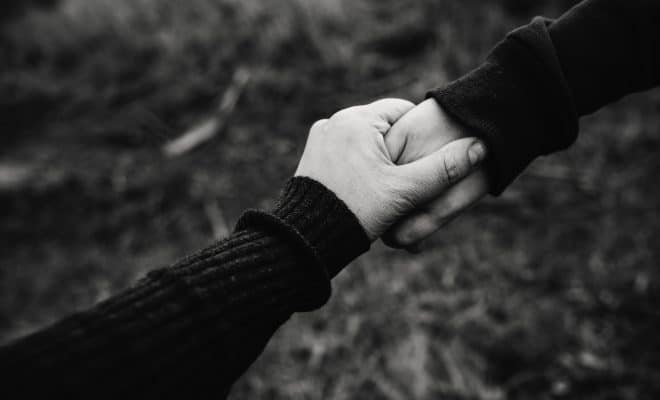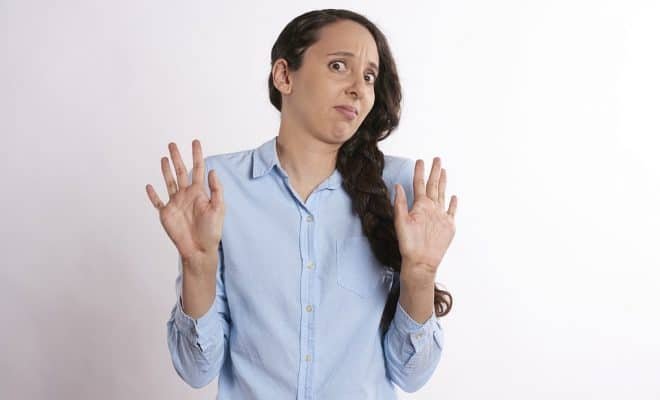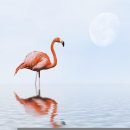Body Parts Do Not Make A Woman

TRIGGER WARNING: BREAST CANCER
A scene from the movie Erin Brockovich:
Donna: “You think that if you got no uterus and no breasts, you’re still technically a woman?”
Erin: “Sure, you are. Yeah, you just…you’re actually a happier woman because you don’t have to worry about maxi-pads and underwire.”
As the team of doctors wheeled me into the operating room for a mastectomy, the above quote from the Erin Brockovich movie resonated with me.
In 1991, due to female complications, I ended up having a total hysterectomy. I remember telling my girlfriends, “It’s the best thing I ever did for myself.”
Eleven years later, in 2002, I found a lump in my breast. The doctor’s misdiagnosed me. Fifteen months later, the diagnosis on the breast lump was now an advanced stage of breast cancer.
At the age of 47, I was single for the first time in a very long time. An empty-nester, working a job I hated but going to school to start a new career.
It was surprising, once I heard those words, “you have cancer,” how nothing else would permeate my mind.
Even though I had been getting mammograms every year from the time I was 40, the outcome was always healthy. How could this be? I ate clean; I exercised daily. I did smoke, but not much, and I would have a glass or two of wine nightly to unwind.
However, once the shock of those words wore off, I got to work. I started researching my cancer, Invasive Lobular Carcinoma. I saw the words “Mammographically occult…”
I remember when I found the small, pea-sized lump at the 8:00 position on my right breast. I was doing a breast self-exam (BSE). When I felt the tiny hard invader, I immediately made an appointment with my primary care doctor. She felt it too and sent me over to the radiology department to get a mammogram and an ultrasound. The radiologist, a woman, told me she wasn’t able to feel a lump and asked me to place a lead BB where I “thought” it might be.
After the results came back, she told me it was a fluid-filled cyst, and to go back in a year for a follow-up.
That was in April of 2002. In December of 2002, I felt the lump had gotten bigger. Now it was the size of a quarter. I wasn’t worried; after all, it was a fluid-filled cyst and probably had more fluid buildup.
By April of 2003, the lump was now the size of a large lime, and the skin around it was itchy. It had been a year, so it was time to call the doctor and schedule my follow up. When I called to make an appointment, I told the scheduler about the lump and how it had gotten bigger. She found me an appointment for that day.
My primary care physician was on vacation, so I had to see a different doctor. As I sat on the table, wrapped in my paper gown, he came into the room. He had a kind face and a professional demeanor. He asked me a few questions regarding my past appointment the year before. He then moved the paper gown to the side and started doing a clinical breast exam. As he was examining me, he was asking me questions regarding family history and personal habits. He sent me for a mammogram and ultrasound that day.
The same radiologist who examined me the year before and claimed she couldn’t feel a lump could now feel the lump. While she went over my file, I could tell from the look on her face that the doctor wasn’t happy. As the technician was doing my mammogram, she was extra careful in getting the entire lump onto the machine. The machine squashed my breast so hard, it left bruises. But the pictures came out clean. Nothing showed up on the mammogram. She was puzzled as was I.
The next stop, downstairs to get an ultrasound. As this technician placed the cold ointment on my right breast and placed the wand on the lump, there it was. A large, black mass that seemed to have fingers coming out of it as if to say, “Here I am, come and get me.” A core needle biopsy the following week confirmed our fears; it was breast cancer.
Treatment was surgery, aggressive chemo, and radiation. I opted for a double mastectomy because Lobular breast cancer is not detectable with a mammogram. The surgeons removed nineteen lymph nodes from my right side, and seven had cancer. My tumor was 7 x 6 x 3 cm, Stage 3B — six rounds of chemo, and 60 rounds of radiation with life expectancy at two years.
So much for finding true love, working the dream job, growing old, and seeing grandchildren.
The support of my family and friends was phenomenal. We cracked jokes, they cleaned my house, they cooked me meals, they kept me company during my chemo treatments. They formed a team, “I love Lucy,” and we walked 60 miles for the cause.
I wrote my first book, “One in Eight,” and did workshops in high schools for seven years, telling my story to young women so they could become their own health advocates. Everything I didn’t know then, I taught them now.
This past year, 2019, I celebrated 16 years of being cancer-free.
Five years ago, I found true love when I met my husband. I went to school and graduated Summa cum Laude with a BA degree in Creative writing and English (my dream job, to be a writer). I have several beautiful grandchildren, thanks to my kids and my husband’s kids.
I learned it doesn’t take body parts to be a woman; it takes a fighting spirit, a loving family, and a good heart to be all we can be. I can honestly say I am one lucky woman.
Things Every Woman Needs To Know About Their Breasts
- Dense breast tissue seems to be the number one cause of breast cancer. It is the law your doctor is required to inform you if you have tense tissue in your breast, and they must order other testing besides a mammogram every year.
- Body fat equals higher levels of estrogen in a woman’s body. Many breast cancers are estrogen and progesterone positive.
- Wear a bra that does not constrict lymph nodes. A woman should get professionally measured each year for her bra size. It’s a free service provided by many upscale department stores.
- Eating clean (organic), as well as exercise is an essential aspect of staying healthy. Stay away from processed foods.
- When purchasing fruits and vegetables, look for the #9 on the sticker. Nine indicates organic. The number 8 means it is GMO or treated with pesticides. (Nine is fine; hate eight is my motto.) People complain organic is more expensive. I tell them, pay now or pay later. Clean Fifteen and the Dirty Dozen
- Statistics from the United States National Cancer Institute show a woman’s chance of being diagnosed with breast cancer in their lifetime is one in eight after the age of 70.
- Only five to 10 percent of breast cancers are genetic. The majority of women diagnosed with breast cancer have no significant family history and no other known risk factors.
- It’s essential to know both sides of your family history, mother and father. Cancers such as colon, prostate, testicular are related to breast cancer.
- Smoking is not only related to lung cancer but breast cancer as well. If you smoke, now is the time to stop.
- One percent of men are diagnosed with breast cancer each year.
- Become a part of the Non-Toxic Revolution:
Leave your shoes at the door. Wearing your shoes outside and then wearing them in the house subjects your living environment to lots of different germs. - Drink filtered tap water whenever you can. Use a stainless steel bottle, glass or aluminum water bottle, or a BPA free plastic bottle. BPA is a chemical used to produce plastic and becomes highly toxic when heated up.
- Never leave a plastic water bottle in the car and then drink from it, especially if the inside of your vehicle became hot.
- Never refill a plastic water bottle intended for single usage.
- Never microwave food that is in a plastic container or Styrofoam. Remove plastic wrap before heating your food.
- Parabens, Phthalates, and Pesticides all can contribute to breast cancer. Any chemical we put on our skin gets absorbed into our bloodstream. These chemicals, found in products such as shampoos, cosmetics, lotions, and deodorants, we use every day. Reading labels is essential.
- Leading a healthy lifestyle may not prevent you from getting breast cancer, but it may help reduce your risk.










